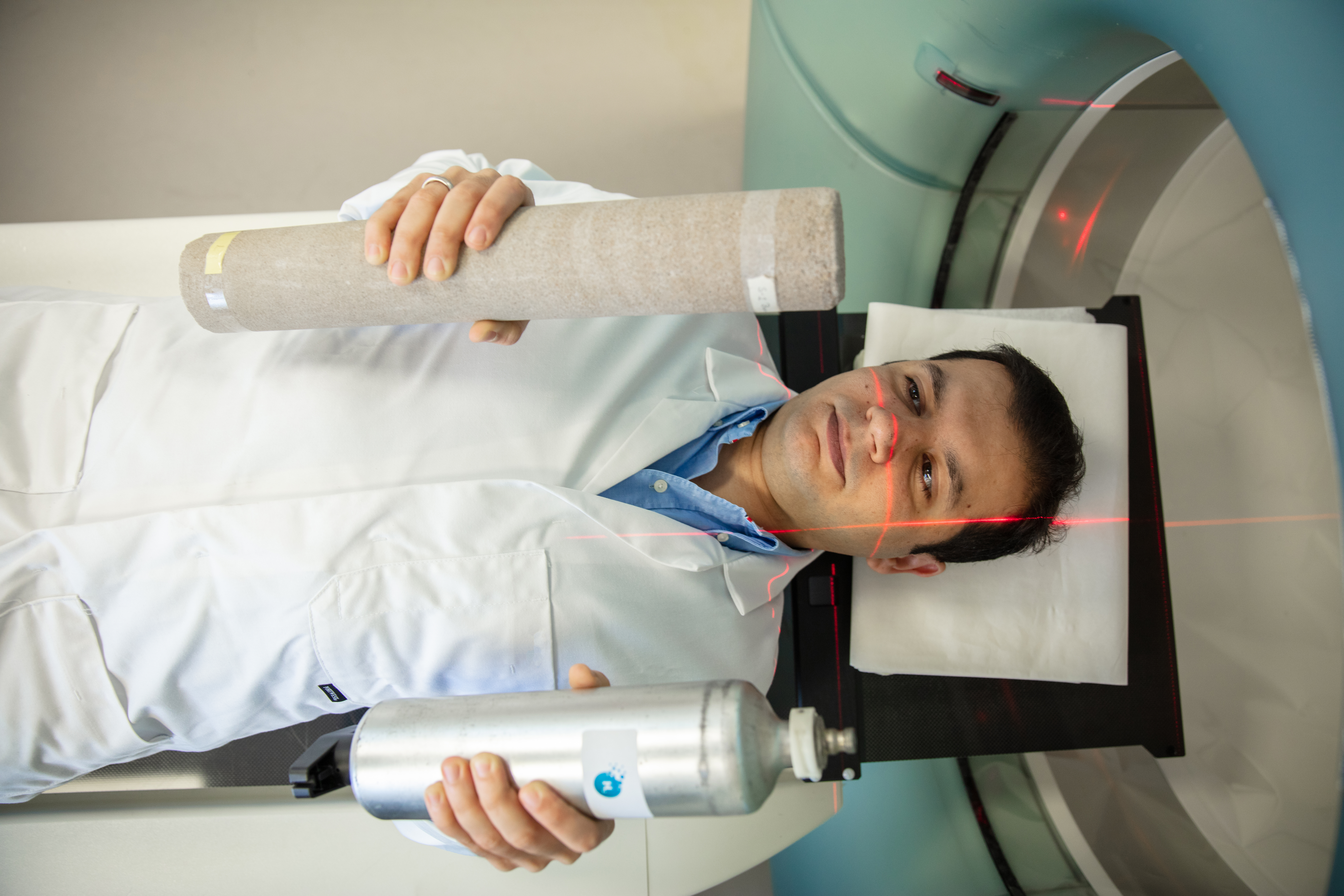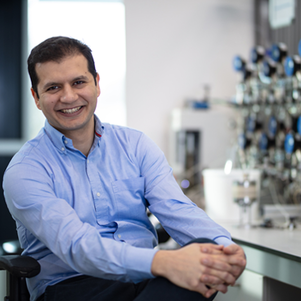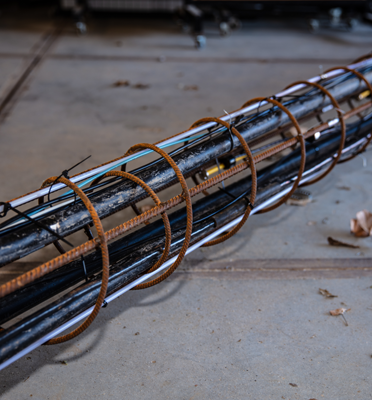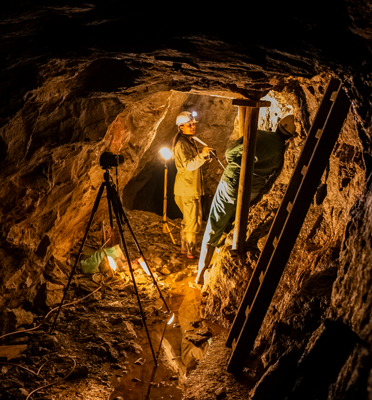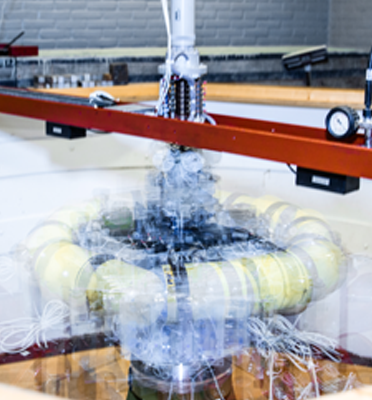Windmills and solar panels are great ways to generate green energy. But what if there is no wind? How can we stock up on solar energy to get through a cloudy day? Hadi Hajibeygi is determined to find the answer to this burning question. He looks into how to use our subsurface as a battery to safely store and retrieve hydrogen.
Today’s batteries do not have the capacity to store even a small fraction of the amount of green energy we require. For example, eight billion Tesla car batteries would be needed to have the Netherlands run on green energy for a single year. Hence, the urgent call for finding alternative ways for renewable energy storage. This starts with converting wind and solar energy into a green fuel like hydrogen.
“These molecules hold a lot of energy. But you need a lot of space to store them as well,” says Hadi Hajibeygi, associate professor at the faculty of civil engineering and geosciences. “So where to store this much energy? The answer is to unlock the space available underground.” To get there, Hadi’s goal is first to predict what happens when green energy is stored underground.
Predicting the unseen
“Imagine being in a dark room trying to find your glasses. And this is also a room you have never been in before.” This is how Hadi describes his research. When he applied for a NWO-TTW ViDi grant he knew precisely what he wanted to do. The result is project ADMIRE, a brand new research group working on the safe and efficient underground storage of renewable energy. The ultimate goal at the end of the five-year project is to pinpoint a test location in the Netherlands to safely store hydrogen. A challenging task as that would be the very first time.
Hajibeygi is specialised in computational geosciences, which is about modelling the behaviour of the earth, especially the earth’s crust up to ten kilometres from the surface . With his team he develops new simulation methods to predict the behaviour of potential underground reservoirs for renewable energy. That’s right up his alley: “I am fascinated by the fact that science allows us to predict things that we cannot even see.”
Hadi with three important elements for his research: hydrogen in a small tank, a large rock sample and a CT-scanner that in his department is not used to scan bodies but to take a look at the inside of rocks and to create cross-sections. These scans help to understand how in certain layers of the subsurface fluids will flow and how cracks will develop.
The lightest molecule on the planet
One option for the large-scale storage of green fuels is to put the gas in so-called salt caverns, caves which are created by injecting water into the salt layer in the earth’s crust. Another is to use depleted gas reservoirs. “The advantage is that many characteristics of these fields are already known. You know this reservoir does not have any leaks, as the natural gas was trapped there before, and that there were no major risks with the gas extraction,” says Hajibeygi.
Hydrocarbon gas is already stored in this way, however, thanks to their special properties much more research is needed before this can become common practice for green fuels. “Hydrogen is the lightest molecule on our planet. It is a lot more mobile than any other gas and it easily leaks. We need to study: if we continuously store and retrieve hydrogen in the earth, so in a cyclic manner, will it be safe and will we be able to get it back efficiently?”
Simulation modelling tool
The main scientific challenges Hajibeygi faces is how to map the underground earth and how to predict the effects of green energy storage over a long period of time. “To map a reservoir and its surroundings we use sensing techniques, like electromagnetic and seismic measurements. Then we want to predict the system’s behaviour if we inject and take out hydrogen cyclically over several years.”
To do this Hajibeygi’s team runs many computer simulations. They determine what sensitive parameters exist and how these impact the storage safety and efficiency. Hereby they investigate geological properties, the impact of faults and how storage could affect the stability of the surrounding area. Their goal is to develop a simulation modelling tool that uses the field data to predict if a site is suitable for storage. “The great advantage with green gasses is that you can decide where to store it, onshore or offshore. And if you know what the sensitive regions are, you can just avoid those.”
One planet earth
Hajibeygi finds his drive in having an impact on the big challenges our society is facing today. Such as how to combat climate change and still supply the growing global energy demand. He is passionate about using his branch of science, modelling and simulation, to find the answers. “For me science is a power. I am so curious to understand how nature behaves, and find ways to cohabit with it in a sustainable manner. We have only one home, the planet Earth, so we better find those ways before it is too late!”


